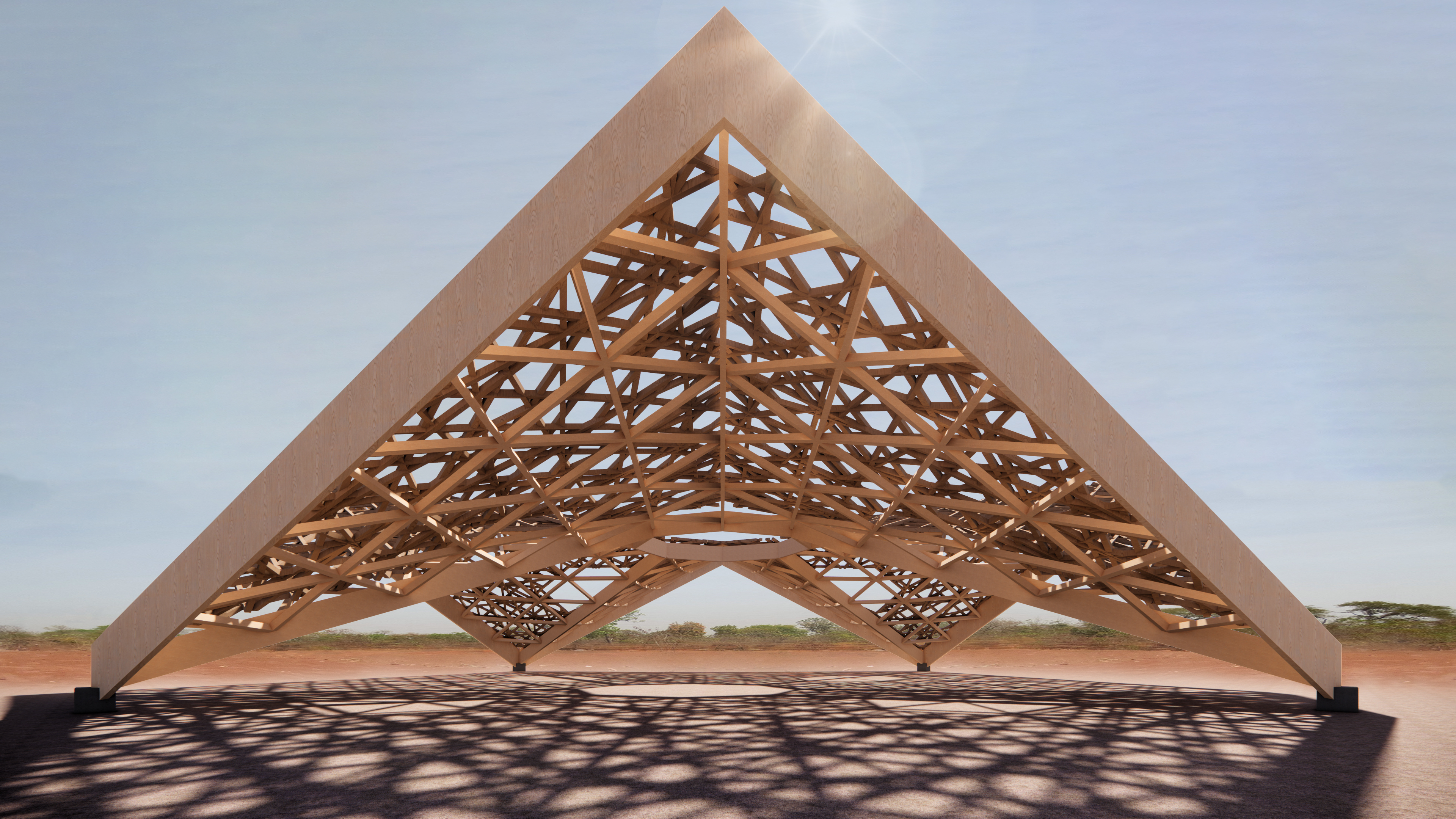Senegal Dance Pavilion
Design: Hengmo Hu
Collaborator: Joseph Ongaco, Lucy Wang, Zhiyan Xu
Advisor: Simon Schleicher
2021 Spring
Collaborator: Joseph Ongaco, Lucy Wang, Zhiyan Xu
Advisor: Simon Schleicher
2021 Spring
The pavilion is intended to support traditional Senegalese dance practices, the most common being drum circle-based dances (such as Pulaar,
Sereer, Wolof, or Sabar), which are practiced by multiple ethnic groups in Senegal for weddings, festivals, and other scales of celebration.
Therefore, the primary architectural function of the dance pavilion is to provide dappled shading over a large specified area, protecting musicians
and observers from excessive exposure to sunlight. Our open-air structure is made of treated timber to cope with the humid climate, and the non-structural lattice provides shade while also
allowing air flow.









The open-ended space of the dance pavilion
design might also lend itself to alternative uses,
such as temporary marketspace, civic meeting
space, among other community-based functions.
design might also lend itself to alternative uses,
such as temporary marketspace, civic meeting
space, among other community-based functions.
